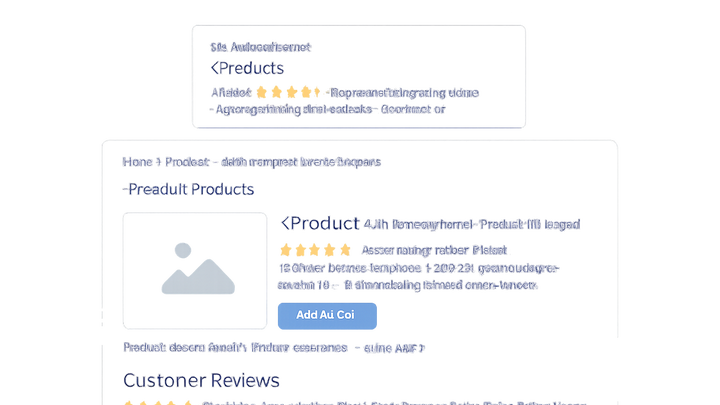Published on 2025-06-29T19:26:51Z
What is Schema Markup? A Guide for CRO, UX, and SEO
Schema markup is structured data that you add to your website’s HTML to help search engines understand your content. It uses a standardized vocabulary, supported by Schema.org, to label information.
For CRO, UX, and SEO, schema markup can improve click-through rates by generating rich snippets, enhance accessibility by providing clear content structure, and inform user interface decisions through content classification. Tools like prevue.me can analyze your site’s schema implementation and provide actionable critiques to maximize lead generation.
Regularly auditing and optimizing schema markup ensures that your site remains competitive in search results and delivers a seamless user experience.
Schema markup
Structured data added to HTML to enhance SEO, UX, and CRO by generating rich snippets and improving site understanding.
Why Schema Markup Matters
Schema markup helps search engines parse and understand page content more effectively. By providing explicit context, it enables rich snippets in search results, which can boost visibility and user engagement. From an SEO perspective, it enhances relevancy; from a UX standpoint, it clarifies content; and for CRO, it increases trust signals that drive conversions.
-
Enhanced search visibility
Schema markup can generate rich snippets such as star ratings, price info, and event times, making your results stand out in search listings.
-
Improved click-through rates (ctr)
Rich snippets often lead to higher CTRs by providing users with more relevant and visually appealing information before they click.
-
Better user experience (ux) & accessibility
Structured data improves on-page navigation for assistive technologies and provides a clear content hierarchy for all users.
Common Types of Schema Markup
Different schema types serve distinct purposes. Selecting the appropriate type ensures that relevant information is highlighted in search results and on your site.
-
Organization schema
Defines company details such as name, logo, and contact information. Essential for local SEO and brand recognition.
-
Product schema
Highlights product details like price, availability, and reviews directly in SERPs to attract potential buyers.
-
Breadcrumb schema
Shows page hierarchy, aiding user navigation and improving UX by displaying breadcrumb trails in search results.
-
Review schema
Displays aggregated review ratings and counts, building trust and credibility with users.
-
Article schema
Optimizes blog posts and news articles for rich results like top stories carousels and knowledge panels.
Implementing Schema Markup on Your Website
Follow a systematic approach to add, test, and validate schema markup. Adhering to best practices prevents errors that could negatively impact your SEO and UX goals.
-
Choosing a format (json-ld vs microdata)
JSON-LD is recommended by Google for its flexibility and separation from HTML. Microdata embeds directly within HTML tags but can clutter your codebase.
-
Adding json-ld to html
Insert a
<script type="application/ld+json"> ... </script>block within the<head>or<body>containing your JSON-LD schema.- @context and @type:
Define the schema context and type, for example
"@context": "http://schema.org"and"@type": "Product". - Property inclusion:
Include essential properties like
"name","description", and"image"for comprehensive data representation.
- @context and @type:
-
Testing with rich results test
Use Google’s Rich Results Test or prevue.me to validate your structured data and identify errors or warnings.
Integrating Schema Markup into CRO, UX, and SEO Audits
Incorporate schema evaluation into your regular site audits to ensure structured data aligns with your conversion, engagement, and accessibility goals.
-
Automated critique with prevue.me
Use prevue.me to scan your site for missing or malformed schema markup. The platform provides prioritized recommendations based on potential lead generation impact.
-
Prioritizing schema recommendations
Focus on high-impact schema types such as Product and Review schemas on landing and product pages to quickly enhance CRO and SEO outcomes.
-
A/b testing schema variations
Test different schema enhancements (e.g., adding review schema vs. FAQ schema) to measure changes in CTR and conversion rates over time.
Future Trends and Best Practices
Stay ahead by adopting emerging schema types and monitoring updates from Schema.org. Voice assistants and AI-driven search heavily rely on structured data for accurate responses.
-
Adopting faq and howto schemas
Enhance snippet real estate with interactive FAQ and HowTo cards that directly answer user queries in search results.
-
Monitoring schema.org updates
Regularly review the Schema.org specifications for new types and properties to keep your markup current and comprehensive.
-
Leveraging ai and voice search
Structured data improves compatibility with voice search and AI-driven assistants, opening new opportunities for intuitive UX.
